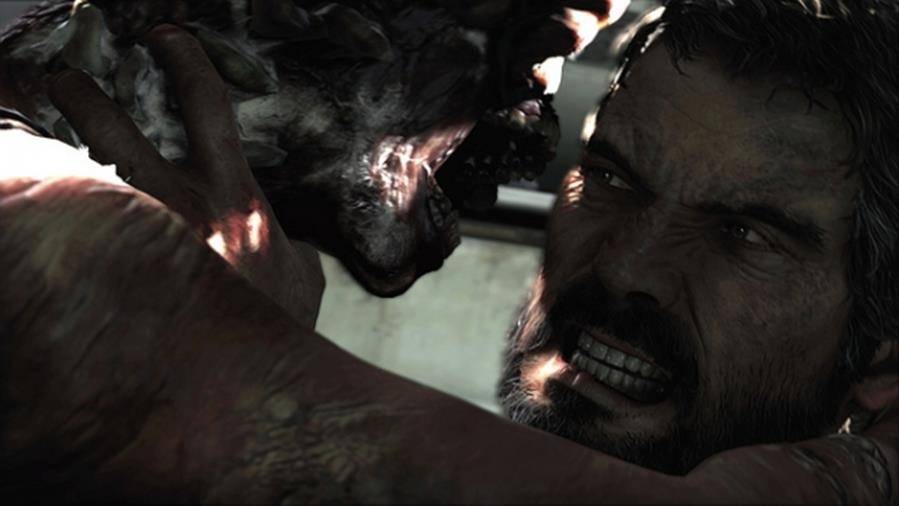Will Video Game Stories ever Get Better?
Note: The article below contains minor spoilers for The Last of Us.
[sociallocker]One of the biggest topics in gaming over the past few years is the evolution of how video games are becoming more like movies. Some see this as a positive because it shows the evolution and progression of gaming, while others see it as a negative, saying that it represents a culture that is trying to change itself into something it isn’t. I think this is wrong. Games aren’t becoming more like movies, they’re just adapting elements from a successful medium to improve themselves, and there’s nothing wrong with that.
Movies are atmospheric and have deep and complex characters and beautiful imagery and morals and themes that reflect society. Game developers, many of whom are also film buffs, saw that and said “hey, why don’t we do that?” Thanks to the very nature of video games, there’s a potential for more depth, more quality than anything available on the silver screen. The average movie is around 2 hours long, 3 hours at a stretch, any more than that and you’re definitely pushing your luck, but story-centred games are usually around 8-12 hours long, while RPG’s and other gameplay & exploration focused narratives can go many times beyond that. Movies have two hours to introduce our characters, give them a personality, give them an arc, give us a plot and exposition and, depending on the genre, it might also have to throw in some action scenes just to keep the audience invested. Movies have just too much to tackle in a short time span – this is why we’re in a renaissance of television and gaming, because the narratives and quality can expand more allowing for a more detailed and enriching world and characters.
So then we ask the question, how good can videogame stories get and how far can they go? Well, given that they don’t have a specific time span, they also don’t follow a basic narrative structure. No game writer needs to be forced into a three act structures, or an A-B story set. Take The Last of Us for example, a roughly 14 hour long story with two main characters and seven supporting characters, all of which are used to reflect the ideologies and arcs of our main characters. Tess represents Joel’s dark side, Bill is a reminder of why Joel always finds something to fight for and Tommy is a shadow of his former life. Given the time span, this is a story that could have worked very well as a book or mini-series, but it is at its best as a game, and the reason why is very simple.
You can try as hard as you want to make us connect to the characters, give them detailed personalities, deep stories, relatable ideologies, but the simplest methods sometimes work the best. By giving the viewer control, it gives you an extra reason to believe in the people you meet. At the start of the game, the first person you control is Joel’s daughter Sarah, resulting in an instant connection. We latch onto her and then see the world through her eyes. After she hurts her leg we then take control of Joel, we now see things from his point of view. His goal is to protect his daughter, giving us a new goal in-line with the protagonists, something he (and by extension, we) quickly fail. By the end of the first chapter, we’re upset on two different levels: because it’s like a part of us is gone with her and because we feel like a failure for being unable to keep her safe. The simple act of giving control, of setting objectives, changes the way the introduction to The Last of Us works as a narrative, and it’s a change that couldn’t happen in any other medium.
It’s more than just story & exposition to developing characters, it’s also the downtime you spend with them. A story can’t always be on point, there needs to be times where you just sit down and talk with the characters without their lives being in immediate danger, where we learn about them for the sake of learning, because these scenes aren’t about enriching the story, they’re about enriching the characters. In Terminator 2, we see John Connor trying to teach the T-800 how to behave more like a human, Zombieland has characters telling us their backstories while playing a board game and, in The Incredibles, we see Bob interact and play with his family. It’s scenes like this that makes us connect with these characters, beyond their direct actions. Can video games achieve this? Of course they can.
Not every story offers the chance to have a sit down and talk with the characters, but usually games have a lot more opportunities to do this. The character building generally takes place in-between all the action, and cutscene offer a chance for both the player and protagonist to take it easy between moments of high energy. Another great location is on hub levels, especially in RPGs like Mass Effect 3. This is when the sit down moments come up a lot, mostly because you choose what you want to talk about, learn more about a character’s history or their opinions on certain subjects.
So overall, how good can video game stories get? Well considering that they’re better paced, have more opportunities for development and have taken all the best elements of movies and improved on them to a level that cinema could arguably never achieve, storytelling in gaming can only get better from here on out.[/sociallocker]




